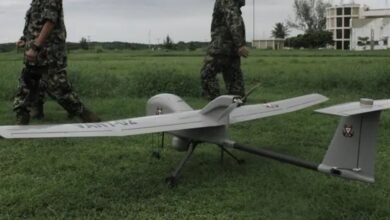Disability in Latin America: How Adapted is the Region for this Population?
People with Disabilities are Vulnerable to Situations of Discrimination, With Physical Barriers in the Infrastructure and Social Empathy as Predominant Factors of their Reality in the Region.

Photo: Pixabay
LatinAmerican Post | Christopher Ramírez
Listen to this article
Leer en español: Discapacidad en Latinoamérica: ¿Qué tan adaptada está la región para esta población?
Latin America and the Caribbean is a region inhabited by more than 640 million people, according to data recorded by the specialized page Statista. Now, the figures of people with disabilities (PwD) in the region are not so exact: while the Economic Commission for Latin America and the Caribbean (ECLAC) registers a little more than 71 million PwD, 12.6% of the total population, a World Bank report registers some 85 million PwD in the region, that is, 14.7%. This means that at least one in ten households has a person with some type of disability.
This situation demonstrates the invisibility that still victimizes this population, since, as specified by the World Bank, it is still necessary to "improve data collection" in the region in order to know more accurately the existence of this population, "particularly people with psychosocial and intellectual disabilities."
Under this premise, it is extremely complex to be able to study this group in a concrete way and manage development and inclusion plans for these people within society. This, of course, translates into much more exclusionary situations that only end up victimizing PwD more and more.
Even so, with the difficulties that currently exist to study this population, organizations such as those already mentioned and some others have managed to analyze some figures obtained over the last few years that leave the governments of the region very poorly accommodated in the fight against discrimination and abandonment of people with functional diversity.
For example, again citing the World Bank report, it is known that of the total number of households in situations of extreme poverty in Latin America and the Caribbean, several live with a PwD. This makes discrimination greater, especially if the family lives in a rural area or if it is from an indigenous community, Afro-descendant or with a female head of the family.
Adaptability in society
This reality also makes something clear: the situation of poverty to which PwD are exposed is a reflection of the lack of adaptability policies for this population in most of the countries of the region.
An example of this is what happens in sectors such as education and work. Only in the first case, the barriers, both in infrastructure and in special pedagogical strategies, have made illiteracy in the population with disabilities five times higher. In more specific numbers, this means that at least 15% of children with disabilities cannot attend school, while in the case of adolescents and young people they are 23% less likely to finish secondary school and 9% less than completing higher education.
As for the labor sector, the reality is no different, taking into account the large gaps that still exist. According to a report by the Pan American Health Organization (PAHO), "around 50% of the population with disabilities in the region is of working-age (…) However, the high levels of poverty and unemployment in the general population, as well as the clear relationship between poverty and disability, make the situation of people with disabilities in the region very serious, since most of them are unemployed or excluded from the labor market”.
You can also read: What's ahead for people with disabilities in the post-pandemic workplace?
Now, the facts confirm that the difficulty lies not only in the complications PwD have to get a job compared to people without disabilities, but also in the difficulties experienced by those who get one to be able to do it.
Aside from the fact that, according to the International Labor Organization, the majority of PwD who get a job end up in low-ranking positions with low incomes, the fact is that they also have to spend more of their budget on ways to get around to work, than the media.
“The lack of universally accessible public transportation infrastructure and services forces PwD to use private transportation such as taxis, and thus have to spend a higher percentage of their budget on transportation,” explains Moviliblog, a communication strategy led by the Inter-American Bank of Development (IDB).
According to a survey carried out in 39 countries by the Global Alliance for Accessible Environments and Technologies (GAATES), of the total PwD who responded:
- 47% assured that they did not use public transport, taking into account that the vehicles were practically inaccessible.
- 35% reported negative attitudes on the part of the workers of this service (drivers and other staff members).
- 26% accused their respective governments of having few vehicles for public transport in general.
- 25% indicated poor maintenance of pedestrian pathways with broken sidewalks, dislodged tiles and large unevenness that affect their mobility.
For the IDB, these types of situations represent clear cases of exclusion towards the population with disabilities, summarized in physical, social barriers and "by the community and transportation officials."
Recommendations
Seeing this reality, both the IDB and the World Bank have developed instruction and support guides so that the governments themselves are responsible for developing strategies that can create a much more inclusive region in all social environments. Thus, for example, the World Bank recommends "empowering and allocating resources to government agencies and establishing clear, progressive and measurable objectives", in addition to "breaking the myth that inclusive policies benefit a few".
For its part, the IDB initiated the Travel Maps project, with which it intends to help some of the most important cities in Latin America and the Caribbean to improve their public transport system for the inclusion of PwD and the improvement of their living conditions in society.




